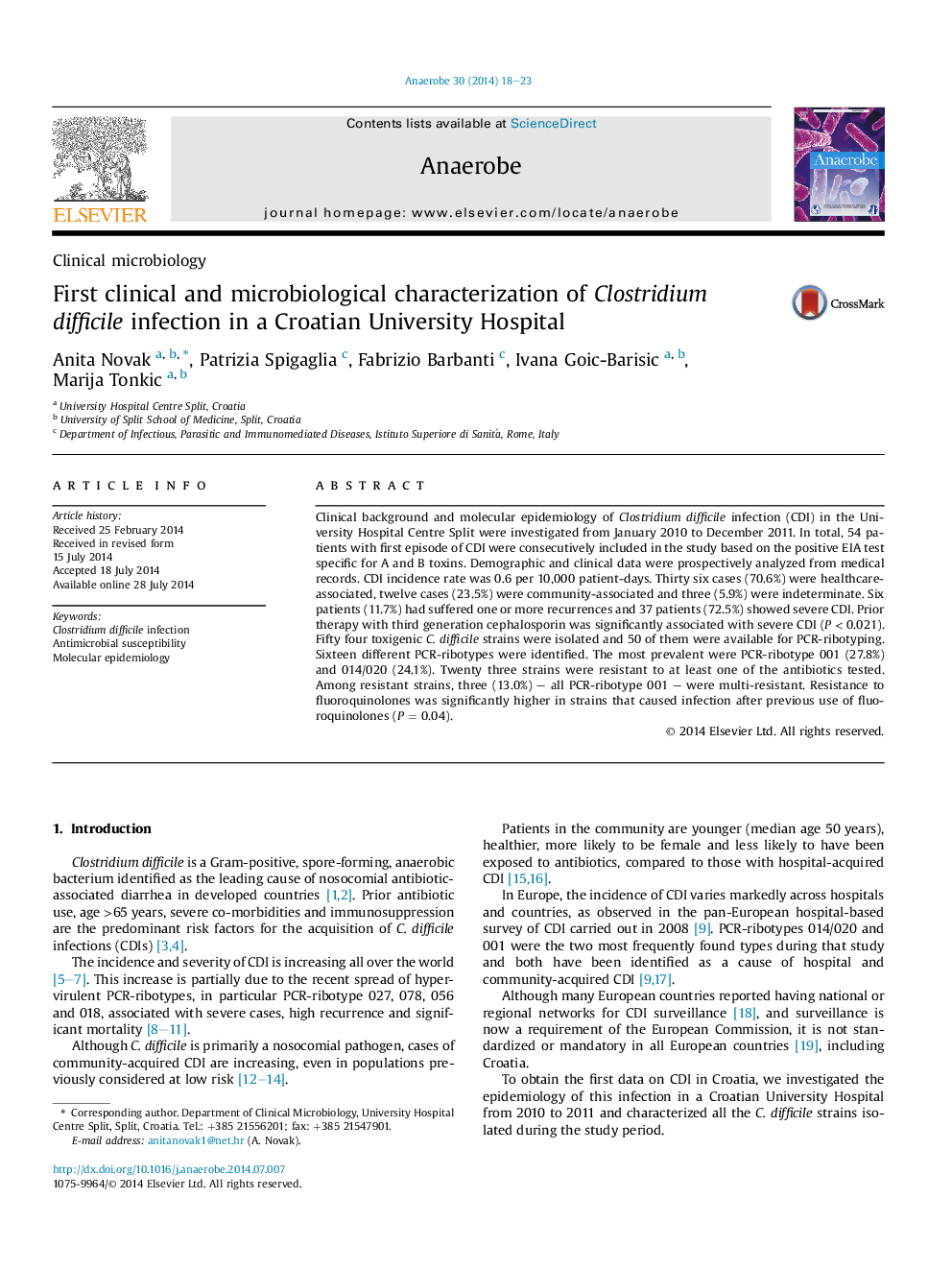| Article ID | Journal | Published Year | Pages | File Type |
|---|---|---|---|---|
| 3395018 | Anaerobe | 2014 | 6 Pages |
•The first report on CDI in Croatia.•The third generation cephalosporins were associated with severe CDI (P < 0.021).•13.0% of isolates – all PCR-ribotype 001 – were multi-resistant.•Resistance to FQ was significantly associated with previous use of FQ (P = 0.04).
Clinical background and molecular epidemiology of Clostridium difficile infection (CDI) in the University Hospital Centre Split were investigated from January 2010 to December 2011. In total, 54 patients with first episode of CDI were consecutively included in the study based on the positive EIA test specific for A and B toxins. Demographic and clinical data were prospectively analyzed from medical records. CDI incidence rate was 0.6 per 10,000 patient-days. Thirty six cases (70.6%) were healthcare-associated, twelve cases (23.5%) were community-associated and three (5.9%) were indeterminate. Six patients (11.7%) had suffered one or more recurrences and 37 patients (72.5%) showed severe CDI. Prior therapy with third generation cephalosporin was significantly associated with severe CDI (P < 0.021). Fifty four toxigenic C. difficile strains were isolated and 50 of them were available for PCR-ribotyping. Sixteen different PCR-ribotypes were identified. The most prevalent were PCR-ribotype 001 (27.8%) and 014/020 (24.1%). Twenty three strains were resistant to at least one of the antibiotics tested. Among resistant strains, three (13.0%) – all PCR-ribotype 001 – were multi-resistant. Resistance to fluoroquinolones was significantly higher in strains that caused infection after previous use of fluoroquinolones (P = 0.04).
